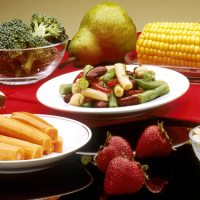
Kids Eating Healthy
Fast food is a big part of modern life these days, making it very hard to teach a child how he or she should eat healthy. The cheapest and easiest foods are those that are normally the least healthy. If you give your child the choice between healthy food and junk food, you normally won’t like the results.
Even though it isn’t possible to get a child to like all healthy foods, there are some ways to get your child to try and hopefully like at least a few of them. You can be as creative as you like, as getting kids to eat healthy foods can be a little harder than you may think.
- Sneak the healthy food in. Even though it would be great if your kid understood the importance of fruits and vegetables, this isn’t always possible. If you can’t get them to eat good food willingly, there are ways to sneak them in, such as making muffins out of bananas or apples, or pizza with spinach on it.
- Call fruits and vegetables by funny names. You can refer to broccoli as “trees”, making them more fun to eat. There are many different names you can call fruits and vegetables, even making up your own if you prefer. Most kids prefer to eat foods that sound fun.
- Make the foods taste better. Ranch dressing is great for broccoli, while peanut butter is a great topping for celery. There are several combinations for vegetables that can make them taste much better. You can let your child pick a topping for a vegetable, even if it’s something you wouldn’t normally like yourself.
- Dress the vegetables up. Just as much as calling them names help kids eat healthy foods, making them look funny also helps. You can do this by making funny designs on the plate, or setting them up to look like people. Although some parents don’t like their kids playing with their food, sometimes it helps to get them to eat healthier.
There are several ways to make your kids eat healthier, but to make them enjoy it also has to be fun as well. This isn’t always an easy task, because kids normally don’t like foods that are good for them. It can however, be done with a bit of creativity. Hopefully, doing this will help your child develop a love of healthy foods for the rest of their lives.








